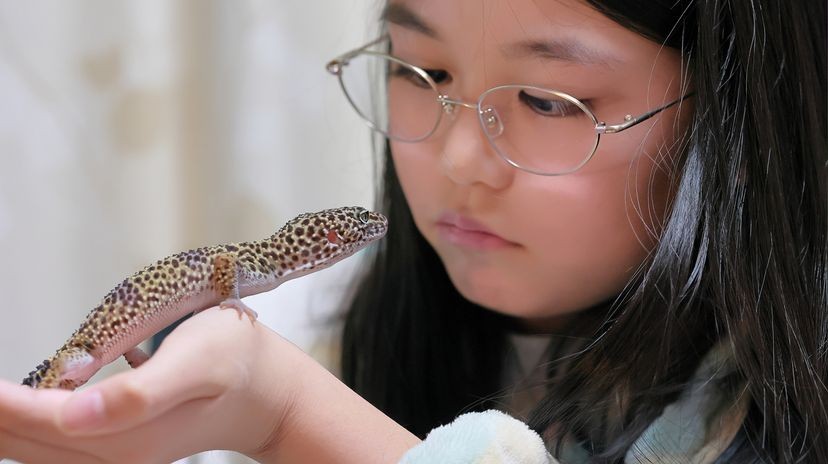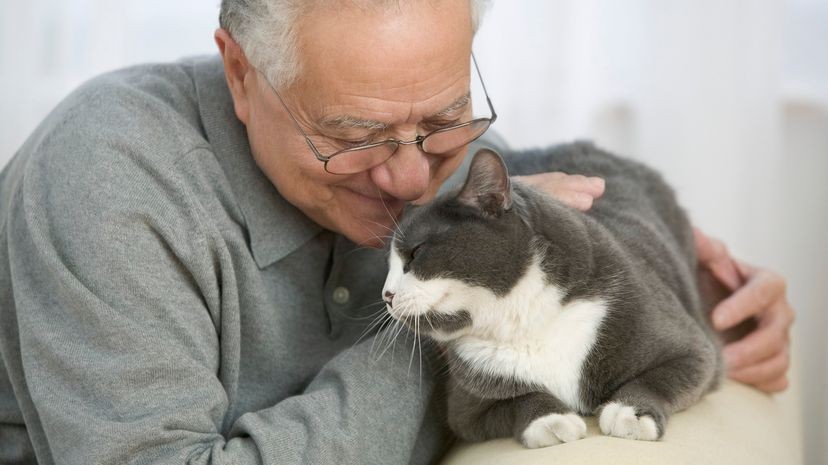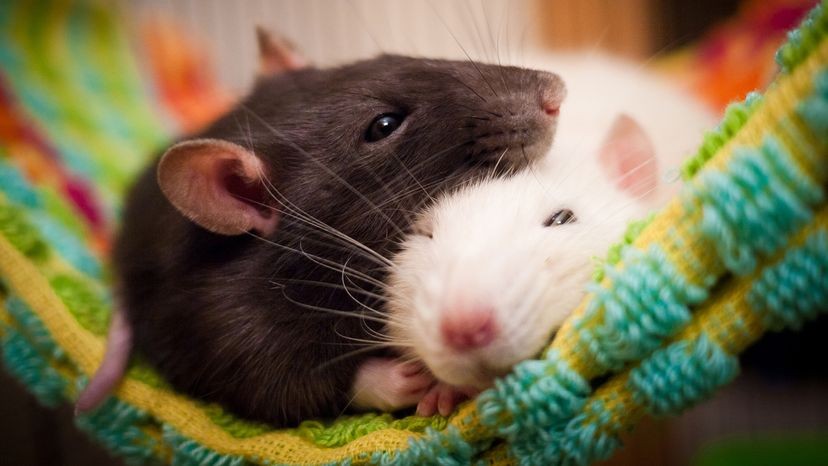What Is A Good Pet To Have? Finding the perfect companion can be a joyous adventure. At PETS.EDU.VN, we’re dedicated to helping you navigate this exciting journey, ensuring you find a pet that fits seamlessly into your lifestyle. Explore options and discover the joys of pet ownership with our expert guidance and insightful resources.
1. Understanding Your Lifestyle and Preferences
Before diving into the delightful world of pets, it’s essential to understand your lifestyle and preferences. A pet is a long-term commitment, and choosing one that aligns with your daily routine, living situation, and personal inclinations is crucial for both your happiness and the animal’s well-being.
1.1. Assessing Your Living Situation
Your living situation plays a significant role in determining what is a good pet to have. Consider the following factors:
- Space: Do you live in a spacious house with a big yard, or a small apartment? Larger pets like dogs need more room to roam, while smaller pets like cats, fish, or hamsters can thrive in smaller spaces.
- Landlord Restrictions: Many landlords have restrictions on the type and size of pets allowed. Be sure to check your lease agreement before bringing a pet home.
- Noise Levels: Some pets, like birds or certain dog breeds, can be quite vocal. If you live in an apartment with thin walls, a quieter pet might be a better choice.
- Allergies: Consider if anyone in your household has allergies. Some breeds of dogs and cats are hypoallergenic, but no pet is truly allergy-free.
1.2. Evaluating Your Daily Routine
Your daily routine is another critical factor in choosing the right pet. Ask yourself:
- How much time do you have to dedicate to a pet? Dogs often require multiple walks, playtime, and training sessions each day. Cats need regular playtime and grooming. Even smaller pets need daily attention and care.
- How often are you away from home? If you travel frequently or work long hours, a more independent pet like a cat or a fish might be a better fit.
- What is your activity level? An energetic dog would be a great companion for an active person who enjoys hiking or running. A more sedentary person might prefer a cat or a smaller pet that doesn’t require as much exercise.
- Are you prepared for the financial commitment? Pets can be expensive. Food, vet care, grooming, and supplies can add up quickly.
1.3. Considering Your Personal Preferences
Finally, think about your personal preferences and what you’re looking for in a pet:
- Companionship: Do you want a pet that will cuddle with you on the couch, or are you happy with a more independent companion?
- Interaction: Do you want a pet that you can train and play with, or are you looking for a pet that is content to be observed?
- Maintenance: Are you willing to clean litter boxes, groom fur, or clean tanks?
- Lifespan: Consider the lifespan of different pets. Dogs and cats can live for 10-15 years or more, while smaller pets like hamsters typically live for only a few years.
2. Popular Pet Choices and Their Unique Characteristics
Now that you’ve assessed your lifestyle and preferences, let’s explore some popular pet choices and their unique characteristics. This information will help you narrow down your options and find a pet that truly complements your life.
2.1. Dogs: The Loyal Companions
Dogs are often called “man’s best friend,” and for good reason. They are known for their loyalty, affection, and intelligence. According to the American Veterinary Medical Association (AVMA), over 48 million households in the United States own a dog.
- Pros:
- Loyal and affectionate
- Can be trained to perform tricks and tasks
- Encourage an active lifestyle
- Provide companionship and emotional support
- Cons:
- Require significant time and attention
- Need regular exercise and training
- Can be expensive (food, vet care, grooming)
- May bark or become destructive if not properly trained
Popular Dog Breeds:
| Breed | Size | Energy Level | Grooming Needs | Temperament |
|---|---|---|---|---|
| Labrador | Large | High | Low | Friendly, Outgoing |
| Golden | Large | High | Moderate | Affectionate, Loyal |
| Bulldog | Medium | Low | Low | Calm, Courageous |
| Poodle | Varies | Moderate | High | Intelligent, Active |
| Beagle | Small | High | Low | Curious, Happy |





2.2. Cats: The Independent Friends
Cats are another popular pet choice, known for their independence, cleanliness, and playful nature. The AVMA reports that over 31 million households in the United States own a cat.
- Pros:
- Relatively low-maintenance
- Clean and quiet
- Affectionate and playful
- Independent and can be left alone for longer periods
- Cons:
- Can be destructive if not provided with scratching posts
- May require regular grooming
- Can be picky eaters
- May hunt birds and other small animals
Popular Cat Breeds:
| Breed | Size | Energy Level | Grooming Needs | Temperament |
|---|---|---|---|---|
| Maine Coon | Large | Moderate | High | Gentle, Friendly |
| Persian | Medium | Low | High | Calm, Affectionate |
| Siamese | Medium | High | Low | Vocal, Intelligent |
| Ragdoll | Large | Low | Moderate | Docile, Affectionate |
| Bengal | Medium | High | Low | Active, Curious |
2.3. Small Mammals: The Pocket-Sized Pals
Small mammals like guinea pigs, hamsters, and rabbits can make wonderful pets for those with limited space or time. They are often easier to care for than dogs or cats, but still provide companionship and entertainment.
- Guinea Pigs (Cavia porcellus)
- Pros: Social, gentle, enjoy interacting with humans
- Cons: Require daily cage cleaning, need companionship of other guinea pigs
- Hamsters (Mesocricetus auratus)
- Pros: Low-maintenance, quiet, entertaining to watch
- Cons: Nocturnal, solitary, short lifespan
- Rabbits (Oryctolagus cuniculus)
- Pros: Intelligent, can be litter-box trained, social
- Cons: Require a lot of space, need to be protected from chewing hazards
Small Mammal Care Comparison:
| Pet | Cage Size | Social Needs | Lifespan | Daily Care |
|---|---|---|---|---|
| Guinea Pig | Large | Need Companionship | 5-7 years | Daily cleaning |
| Hamster | Small | Solitary | 2-3 years | Spot cleaning |
| Rabbit | Large | Social, but can be alone | 8-12 years | Litter box change |
2.4. Birds: The Feathered Friends
Birds can be colorful, intelligent, and entertaining pets. They range in size from small budgies to large parrots, each with its own unique personality and care requirements.
- Pros:
- Beautiful and engaging
- Can be trained to talk and perform tricks
- Relatively low-maintenance
- Long lifespan (some parrots can live for 50+ years)
- Cons:
- Can be noisy
- Require specialized diets and care
- May bite if not properly handled
- Need a large cage to fly and exercise
Popular Bird Species:
| Species | Size | Vocalization | Lifespan | Care Level |
|---|---|---|---|---|
| Budgie | Small | Chirping | 5-10 years | Low |
| Cockatiel | Medium | Whistling | 15-20 years | Moderate |
| Parrot | Large | Talking | 50+ years | High |
| Canary | Small | Singing | 10-15 years | Low |
| Finch | Small | Chirping | 5-10 years | Low |
2.5. Fish: The Aquatic Companions
Fish are a calming and low-maintenance pet option. They come in a wide variety of colors and sizes, and can be fascinating to watch.
- Pros:
- Low-maintenance
- Quiet and peaceful
- Beautiful and calming to watch
- Relatively inexpensive to care for
- Cons:
- Limited interaction
- Require regular tank cleaning
- Susceptible to diseases
- May not be suitable for young children
Popular Fish Species:
| Species | Size | Care Level | Temperament | Tank Size |
|---|---|---|---|---|
| Betta | Small | Moderate | Solitary | 5 gallons |
| Goldfish | Small | Moderate | Social | 20 gallons |
| Guppy | Small | Easy | Social | 10 gallons |
| Tetra | Small | Easy | Social | 10 gallons |
| Angelfish | Medium | Moderate | Semi-Aggressive | 30 gallons |
2.6. Reptiles: The Scaly Friends
Reptiles like lizards, snakes, and turtles can be fascinating and unique pets. They require specialized care, but can be rewarding companions for the right person.
- Pros:
- Unique and interesting
- Relatively low-maintenance
- Quiet and clean
- Hypoallergenic
- Cons:
- Require specialized diets and habitats
- Can be expensive to set up
- May carry diseases
- Not suitable for young children
Popular Reptile Species:
| Species | Size | Care Level | Temperament | Lifespan |
|---|---|---|---|---|
| Leopard Gecko | Small | Moderate | Docile | 10-20 years |
| Bearded Dragon | Medium | Moderate | Docile | 5-10 years |
| Corn Snake | Medium | Easy | Docile | 15-20 years |
| Ball Python | Medium | Moderate | Docile | 20-30 years |
| Red-Eared Slider | Medium | Moderate | Semi-Aggressive | 20-30 years |
3. Meeting the Unique Needs of Different Pets
Each type of pet has its own unique needs. Understanding these needs is essential for providing proper care and ensuring your pet’s well-being.
3.1. Nutritional Requirements
Proper nutrition is crucial for a pet’s health and longevity. Different pets have different dietary needs, so it’s important to do your research and provide the right food.
- Dogs and Cats: Commercial pet food provides a balanced diet, but it’s important to choose a high-quality brand appropriate for your pet’s age, breed, and activity level.
- Small Mammals: Guinea pigs and rabbits need a diet high in fiber, consisting of hay, fresh vegetables, and a small amount of pellets. Hamsters need a balanced diet of seeds, grains, and vegetables.
- Birds: Birds need a varied diet of seeds, pellets, fruits, and vegetables. Some birds also need supplemental vitamins and minerals.
- Fish: Fish need specialized fish food that is appropriate for their species. Avoid overfeeding, as this can lead to water quality problems.
- Reptiles: Reptiles have a wide range of dietary needs, depending on the species. Some reptiles are herbivores, while others are carnivores or omnivores.
3.2. Housing and Environment
The right housing and environment are essential for a pet’s physical and mental well-being.
- Dogs and Cats: Dogs need a comfortable bed and access to the outdoors for exercise. Cats need a litter box, scratching post, and plenty of toys.
- Small Mammals: Guinea pigs and rabbits need a large cage with plenty of space to move around. Hamsters need a smaller cage with a running wheel and plenty of bedding.
- Birds: Birds need a large cage with plenty of perches and toys. The cage should be placed in a safe location away from drafts and direct sunlight.
- Fish: Fish need a tank that is appropriately sized for their species. The tank should be equipped with a filter, heater, and lighting.
- Reptiles: Reptiles need a terrarium that is appropriately sized for their species. The terrarium should be equipped with a heat source, UVB lighting, and appropriate substrate.
3.3. Exercise and Mental Stimulation
Exercise and mental stimulation are important for all pets, regardless of their size or species.
- Dogs: Dogs need daily walks, playtime, and training sessions to stay physically and mentally healthy.
- Cats: Cats need regular playtime and access to scratching posts and toys.
- Small Mammals: Guinea pigs and rabbits need daily playtime outside of their cage. Hamsters need a running wheel and plenty of toys.
- Birds: Birds need daily time outside of their cage to fly and exercise. They also need plenty of toys to keep them mentally stimulated.
- Fish: Fish need a tank that is appropriately sized for their species. The tank should be equipped with plants and decorations to provide enrichment.
- Reptiles: Reptiles need a terrarium that is appropriately sized for their species. The terrarium should be equipped with climbing structures and hiding places to provide enrichment.
3.4. Health and Veterinary Care
Regular veterinary care is essential for maintaining a pet’s health and preventing disease.
- Dogs and Cats: Dogs and cats need annual checkups, vaccinations, and parasite prevention.
- Small Mammals: Guinea pigs, hamsters, and rabbits need regular checkups to detect and treat any health problems.
- Birds: Birds need regular checkups to detect and treat any health problems.
- Fish: Fish need regular water testing and tank maintenance to prevent disease.
- Reptiles: Reptiles need regular checkups to detect and treat any health problems.
3.5. Socialization and Training
Socialization and training are important for pets to develop good behavior and interact appropriately with humans and other animals.
- Dogs: Dogs need early socialization to prevent fear and aggression. They also need basic obedience training to learn commands and boundaries.
- Cats: Cats need early socialization to prevent fear and aggression. They can also be trained to perform tricks and use a litter box.
- Small Mammals: Guinea pigs and rabbits need to be handled gently and regularly to become comfortable with humans.
- Birds: Birds need to be handled gently and regularly to become comfortable with humans. They can also be trained to talk and perform tricks.
- Fish: Fish do not typically require socialization or training.
- Reptiles: Reptiles need to be handled gently and regularly to become comfortable with humans.
4. Factors to Consider Before Getting a Pet
Before bringing a pet into your home, it’s important to consider the following factors:
4.1. Cost of Ownership
The cost of owning a pet can be significant. In addition to the initial purchase price, you’ll need to factor in the cost of food, vet care, grooming, supplies, and other expenses. According to the American Society for the Prevention of Cruelty to Animals (ASPCA), the annual cost of owning a dog can range from $700 to $2,000, while the annual cost of owning a cat can range from $500 to $1,000.
| Expense | Dog | Cat | Guinea Pig | Hamster | Bird | Fish | Reptile |
|---|---|---|---|---|---|---|---|
| Food | $200-500 | $150-400 | $100 | $50 | $75 | $25 | $150 |
| Vet Care | $200-500 | $150-400 | $50-100 | $50-100 | $100-200 | $25-50 | $100-200 |
| Grooming | $0-500 | $0-200 | $0 | $0 | $0 | $0 | $0 |
| Supplies | $100-300 | $100-300 | $50-100 | $50-100 | $50-100 | $50-100 | $100-300 |
| Miscellaneous | $100-300 | $100-300 | $50-100 | $50-100 | $50-100 | $25-50 | $50-100 |
| Total Annual | $700-2000 | $500-1200 | $250-500 | $200-400 | $275-575 | $125-275 | $400-850 |
4.2. Time Commitment
Owning a pet requires a significant time commitment. You’ll need to dedicate time each day to feeding, exercising, and caring for your pet. You’ll also need to spend time training and socializing your pet.
| Pet | Daily Time Commitment | Weekly Time Commitment |
|---|---|---|
| Dog | 1-3 hours | 7-21 hours |
| Cat | 30 minutes – 1 hour | 3.5-7 hours |
| Guinea Pig | 30 minutes | 3.5 hours |
| Hamster | 15 minutes | 1.75 hours |
| Bird | 30 minutes | 3.5 hours |
| Fish | 15 minutes | 1.75 hours |
| Reptile | 30 minutes | 3.5 hours |
4.3. Lifestyle Changes
Owning a pet can require significant lifestyle changes. You may need to adjust your schedule to accommodate your pet’s needs. You may also need to make changes to your home to ensure your pet’s safety and comfort.
4.4. Responsibility and Commitment
Owning a pet is a serious responsibility. You’re responsible for providing your pet with food, water, shelter, and veterinary care. You’re also responsible for training and socializing your pet. Owning a pet is a long-term commitment, so be sure you’re prepared to provide care for your pet for its entire life.
5. Finding the Right Pet for Your Family
Once you’ve considered all of the factors above, it’s time to start looking for the right pet for your family.
5.1. Adoption vs. Buying
You have two main options for acquiring a pet: adoption or buying. Adoption is a great way to give a deserving animal a loving home. Many animal shelters and rescue organizations have pets available for adoption. Buying a pet from a breeder or pet store can be more expensive, but it allows you to choose a specific breed or type of animal.
5.2. Choosing a Reputable Breeder or Shelter
If you choose to buy a pet from a breeder or pet store, be sure to choose a reputable one. A reputable breeder will be knowledgeable about their animals and will be happy to answer your questions. A reputable shelter will have a clean and well-maintained facility and will provide proper care for their animals.
5.3. Meeting the Pet Before Bringing It Home
Before bringing a pet home, it’s important to meet the animal in person. This will give you a chance to see if you and your family are a good fit for the pet. It will also give you a chance to assess the pet’s temperament and health.
5.4. Preparing Your Home for Your New Pet
Before bringing your new pet home, be sure to prepare your home. This includes providing a safe and comfortable environment for your pet, as well as stocking up on all the necessary supplies.
6. Tips for a Successful Pet Ownership Experience
Here are some tips for ensuring a successful pet ownership experience:
6.1. Be Patient and Understanding
It takes time for a pet to adjust to a new home. Be patient and understanding with your new pet, and give it time to settle in.
6.2. Establish a Routine
Pets thrive on routine. Establish a daily routine for feeding, exercising, and caring for your pet.
6.3. Provide Positive Reinforcement
Positive reinforcement is the best way to train a pet. Reward your pet for good behavior with treats, praise, and affection.
6.4. Socialize Your Pet
Socialization is important for pets to develop good behavior and interact appropriately with humans and other animals.
6.5. Seek Professional Help When Needed
If you’re having trouble with your pet’s behavior or health, don’t hesitate to seek professional help from a veterinarian or certified pet trainer.
7. Specific Pet Recommendations Based on Lifestyle
To further assist you in making the right choice, here are some specific pet recommendations tailored to different lifestyles:
7.1. For Busy Professionals:
- Cats: Cats are independent and require less direct supervision, making them ideal for individuals with demanding work schedules.
- Fish: Aquariums offer a calming presence and require minimal daily attention, suitable for those who value tranquility in their home.
- Reptiles (Leopard Gecko): These reptiles are low-maintenance and don’t need constant interaction, fitting well into a busy lifestyle.
7.2. For Active Individuals:
- Dogs (Labrador, Golden Retriever): These breeds thrive on outdoor activities such as running, hiking, and swimming, perfect for active owners.
- Horses: While requiring significant space and commitment, horses offer unparalleled companionship for riding and outdoor adventures.
7.3. For Families with Children:
- Dogs (Beagle, Bulldog): Known for their gentle nature and patience, these breeds are excellent companions for children.
- Guinea Pigs: These small mammals are friendly and enjoy interacting with kids, providing a great introduction to pet ownership.
7.4. For Seniors:
- Cats (Persian, Ragdoll): Their calm demeanor and low energy needs make them ideal companions for seniors seeking a quiet and affectionate pet.
- Birds (Canary, Finch): These birds offer cheerful companionship with their songs and require minimal physical exertion for care.
8. The Benefits of Pet Ownership
Owning a pet can bring numerous benefits to your life.
8.1. Improved Mental Health
Studies have shown that pet ownership can reduce stress, anxiety, and depression. Pets provide companionship and unconditional love, which can boost your mood and improve your overall mental health.
8.2. Increased Physical Activity
Owning a dog can encourage you to be more active, as you’ll need to take your dog for walks and provide regular exercise. This can help you maintain a healthy weight and improve your cardiovascular health.
8.3. Enhanced Social Interaction
Pets can help you meet new people and build social connections. Dog parks and pet-friendly events are great places to socialize with other pet owners.
8.4. Emotional Support
Pets can provide emotional support during difficult times. They can offer comfort and companionship when you’re feeling lonely or stressed.
8.5. Sense of Purpose
Owning a pet can give you a sense of purpose and responsibility. Caring for a pet can be a rewarding experience that enriches your life.
9. Debunking Common Pet Myths
There are many myths surrounding pet ownership that can be misleading. Let’s debunk some of the most common ones:
9.1. Cats are Low-Maintenance
While cats are more independent than dogs, they still require regular care, including feeding, grooming, and playtime. Neglecting these needs can lead to behavioral issues and health problems.
9.2. Small Pets Don’t Need Veterinary Care
Small mammals, birds, fish, and reptiles all require veterinary care to ensure their health and well-being. Regular checkups can help detect and treat health problems early on.
9.3. You Can’t Teach an Old Dog New Tricks
Dogs of all ages can be trained with patience and positive reinforcement. Older dogs may take longer to learn new commands, but they are still capable of learning.
9.4. Indoor Cats Don’t Need Vaccinations
Even indoor cats need vaccinations to protect them from diseases that can be transmitted through the air or contact with other animals.
9.5. Dogs Only See in Black and White
Dogs can see colors, but their color vision is limited compared to humans. They see the world in shades of blue, yellow, and gray.
10. Resources for Pet Owners
There are many resources available to help pet owners provide the best possible care for their animals.
10.1. Online Resources
- PETS.EDU.VN: Provides comprehensive information and resources on pet care, training, and health.
- American Society for the Prevention of Cruelty to Animals (ASPCA): Offers valuable information on animal welfare and pet adoption.
- American Veterinary Medical Association (AVMA): Provides resources on pet health and veterinary care.
10.2. Local Resources
- Veterinarians: Regular veterinary care is essential for maintaining a pet’s health.
- Pet Stores: Pet stores offer a wide variety of food, supplies, and accessories for pets.
- Animal Shelters and Rescue Organizations: Adoption is a great way to give a deserving animal a loving home.
10.3. Books and Magazines
- The Complete Idiot’s Guide to Dog Training by Sarah Hodgson
- The Cat Whisperer by Mieshelle Nagelschneider
- Bird Talk Magazine
Finding the perfect pet is a personal journey. By considering your lifestyle, preferences, and the unique needs of different animals, you can find a companion that brings joy and enrichment to your life. Remember, responsible pet ownership requires commitment, patience, and a willingness to provide the best possible care for your furry, feathered, or scaled friend.
At pets.edu.vn, we are dedicated to providing you with the knowledge and resources you need to make informed decisions about pet ownership. We believe that every pet deserves a loving home, and every pet owner deserves the support and guidance they need to provide the best possible care.
11. Addressing Specific Concerns and Challenges
Pet ownership is not always smooth sailing. Many people encounter challenges along the way. Here’s how to address some common concerns:
11.1. Dealing with Allergies
- Consult an Allergist: Determine the specific allergens causing your reaction and explore potential treatments.
- Choose Hypoallergenic Breeds: Some dog and cat breeds produce fewer allergens, but no pet is entirely allergy-free.
- Create Allergy-Free Zones: Designate specific areas in your home as pet-free zones, such as the bedroom, to minimize exposure.
- Invest in Air Purifiers: Use air purifiers with HEPA filters to remove allergens from the air.
- Regular Cleaning: Vacuum frequently, wash bedding regularly, and consider using allergen-reducing sprays.
11.2. Managing Behavioral Issues
- Consult a Certified Trainer: A professional trainer can help identify the root cause of behavioral issues and develop a customized training plan.
- Positive Reinforcement: Use rewards-based training methods to encourage good behavior.
- Provide Enrichment: Ensure your pet has plenty of toys, exercise, and mental stimulation to prevent boredom and destructive behavior.
- Address Anxiety: If your pet’s behavioral issues are related to anxiety, consult a veterinarian about potential treatments.
11.3. Balancing Pet Ownership with a Busy Schedule
- Hire a Pet Sitter or Dog Walker: Enlist the help of a professional to provide care for your pet when you’re unavailable.
- Use Automated Feeders and Waterers: These devices can ensure your pet has access to food and water even when you’re not home.
- Choose a Low-Maintenance Pet: Consider pets like cats, fish, or reptiles that require less direct supervision.
- Maximize Quality Time: Even if you have limited time, make sure to dedicate quality time to interacting with your pet each day.
11.4. Traveling with Pets
- Research Travel Regulations: Be aware of the specific regulations for traveling with pets, including airline requirements and quarantine restrictions.
- Prepare a Pet Travel Kit: Pack essential items such as food, water, medications, and a comfortable carrier.
- Ensure Proper Identification: Make sure your pet has a microchip and wears identification tags with up-to-date contact information.
- Consult Your Veterinarian: Discuss any potential health concerns with your veterinarian before traveling.
12. The Latest Trends in Pet Ownership
The world of pet ownership is constantly evolving. Here are some of the latest trends:
12.1. Personalized Pet Products and Services
Pet owners are increasingly seeking out personalized products and services, such as custom-made pet beds, personalized food bowls, and DNA testing for breed identification and health screening.
12.2. High-Tech Pet Gadgets
From smart feeders and interactive toys to GPS trackers and activity monitors, technology is playing an increasingly important role in pet ownership.
12.3. Focus on Pet Wellness
Pet owners are becoming more focused on pet wellness, including nutrition, exercise, and mental health. This has led to a rise in demand for high-quality pet food, holistic veterinary care, and enrichment activities.
12.4. Pet-Friendly Travel
More and more hotels, restaurants, and attractions are becoming pet-friendly, making it easier for pet owners to travel with their furry companions.
12.5. Sustainable and Eco-Friendly Pet Products
As environmental awareness grows, pet owners are seeking out sustainable and eco-friendly products, such as biodegradable waste bags, organic pet food, and toys made from recycled materials.
Table: Updated Information on New Pet Products and Services:
| Product/Service | Description | Benefits |
|---|---|---|
| DNA Testing Kits | Allows pet owners to discover their pet’s breed mix, potential health risks, and unique traits. | Helps tailor care based on breed-specific needs, identify genetic predispositions to diseases. |
| Smart Pet Feeders | Automated feeders controlled via smartphone app, allowing scheduled feeding times and portion control. | Ensures pets are fed on time, even when owners are away, helps prevent overfeeding and obesity. |
| GPS Pet Trackers | Devices attached to collars that allow owners to track their pet’s location via GPS. | Provides peace of mind by helping locate lost pets quickly, monitors activity levels and detects unusual movements. |
| Interactive Pet Toys | Electronic toys that engage pets in stimulating activities, such as chasing lasers or solving puzzles. | Keeps pets entertained and mentally stimulated, prevents boredom and destructive behavior. |
| Eco-Friendly Pet Products | Products made from sustainable materials like recycled plastic, bamboo, or organic cotton. | Reduces environmental impact, offers non-toxic options for pets. |
13. Addressing Ethical Considerations in Pet Ownership
Responsible pet ownership extends beyond providing basic care. It also involves considering the ethical implications of our choices:
13.1. Supporting Ethical Breeding Practices
- Research Breeders Thoroughly: Look for breeders who prioritize the health and welfare of their animals, conduct genetic testing, and provide a stimulating environment.
- Avoid Puppy Mills: Never purchase pets from puppy mills or breeders who prioritize profit over animal welfare.
- Consider Adoption: Adopting a pet from a shelter or rescue organization helps reduce the demand for unethical breeding practices.
13.2. Preventing Pet Overpopulation
- Spay or Neuter Your Pet: Spaying or neutering your pet helps prevent unwanted pregnancies and reduces the number of animals in shelters.
- Support Trap-Neuter-Return Programs: These programs help control feral cat populations by trapping, sterilizing, and returning them to their colonies.
13.3. Protecting Wildlife
- Keep Cats Indoors: Outdoor cats can prey on birds and other small animals, contributing to the decline of wildlife populations.
- Avoid Exotic Pets: Exotic pets often require specialized care that is difficult to provide in a domestic setting. Their purchase can also contribute to the illegal wildlife trade.
13.4. Responsible Waste Disposal
- Use Biodegradable Waste Bags: When walking your dog, use biodegradable waste bags to minimize environmental impact.
- **Dispose
